Diamond Buyer's Guide
The supreme beauty of Diamonds, their priceless rarity, purity and durability makes them the perfect symbol of a man’s love for his partner. used for centuries as an expression of love and marriage, Diamonds are the ultimate gift.
Before making a purchase, you will need a basic understanding of the points to consider when buying a Diamond. The Mandi Collection Diamond Buyer’s Guide simply defines the four C’s that Diamond professionals and connoisseurs the world over rely on – Cut, Color, Clarity and Carat Weight.
Color
Colorless and near-colorless Diamonds are rare, beautiful and highly prized amongst connoisseurs. To the untrained eye, most Diamonds look white. However, to the professional there are small differences in the degrees of whiteness seen.
Most Diamonds have an almost unperceivable tint of color. The various degrees of color tint seen are assigned a letter from D – Z, denoting its position on the Diamond Color Scale. Ranging from the exceptionally rare purest white color of D, to the yellowed tints of Z, the scale is an accurate way to communicate color.
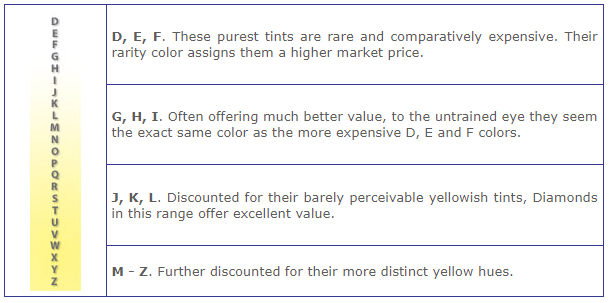
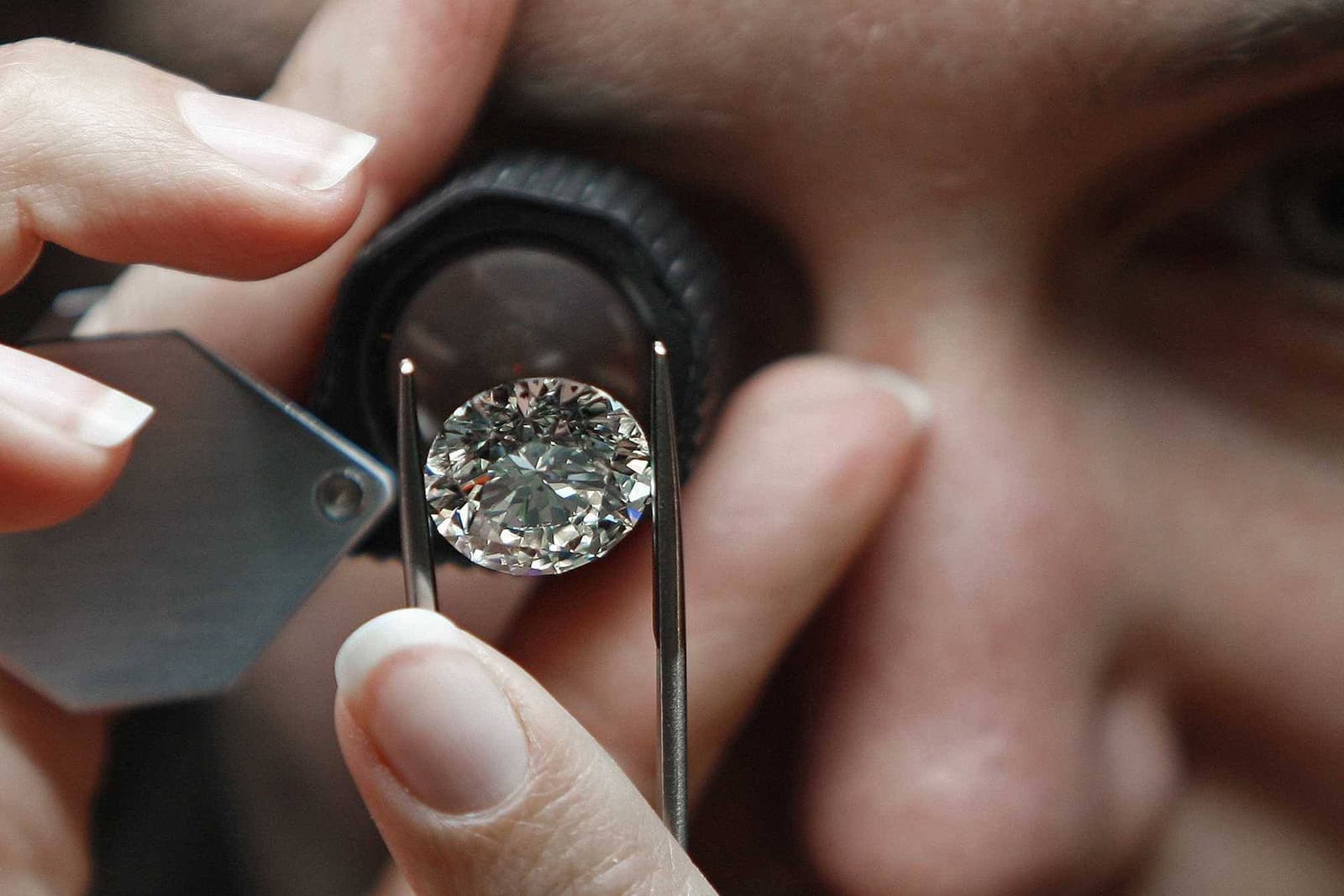
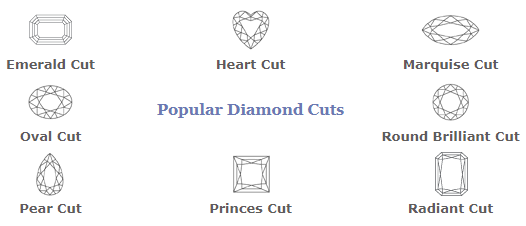
Cut & Polish
With Round Brilliant Cut Diamonds accounting for over 80% of Diamond sales worldwide, ask a women “What shape is a Diamond?” and she’ll probably say round. Despite this figure, there are many other beautiful Diamond cuts that warrant serious consideration. Displayed below are the eight most popular Diamond cuts.
Unlike Colored Gemstones, Diamonds are cut, shaped and proportioned to a remarkably uniform ideal. In 1919, Marcel Tolkowsky published his opinions of what Diamond proportions result in the optimum balance of Brilliance and Fire. While a detailed review of Tolkwosky’s proportions are outside the scope of this Buyers Guide, Diamond graders do take these proportions into account when evaluating the cut of a Diamond. Other attributes that need to be considered include:
Symmetry
The cut should exhibit good facet symmetry. Facets should be aligned straight in relation to the Diamond’s girdle and also to each other.
Polish Condition
The facet polish condition should be good. Surface pits and polishing lines should not be visible.
Diamonds are cut in a variety of cuts. Although not seen in as many variations as Colored Gems, you may recognize many of the shapes listed below. While the outlines and the crowns may look the same, with the exception of an Emerald Cut Diamond, the pavilions of Diamonds usually resemble those of a Round Brilliant Cut Diamond.
Colored Diamonds
While vivid Natural Colored Diamonds are typically rare, Color Enhanced Diamonds are common and relatively inexpensive. The process involves using rarer, clean Diamonds and modifying their color with a combination of electron bombardment and heat using safe electron-accelerator technology that is commonly used for foodstuffs. Unlike other enhancements, Color Enhanced Diamonds are enhanced to fulfill preference for vivid color only; this coloring technique does not try to hide or dissipate flaws.
The myriad of popular Diamond Colors produced using this technology includes Blue, Green, Red, Orange, Yellow, Pink, Purple and Black. The real beauty and popularity of these Diamonds lies in the fact that they combine both the rich color hues of colored gems such as Rubies and Sapphires, with the unforgettable Brilliance and Sparkle of a Diamond. In other words, they virtually become “Two Gems In One”. The majority of Color Enhanced Diamonds sold today weigh between 2 and 25 points. Mostly used in Pave, Channel and Accent jewelry settings, the prices start from a very affordable $10 per piece.
Pairs & Suites
Pairs or Suites of Diamonds matched for Color, Clarity and Cut are more highly valued per Carat or per Gem than single Diamonds of the same quality. Given the rarity of many Diamonds, a matching set is disproportionately hard to find and thus commands a higher per Carat price than if each of the Diamonds from the suite were sold separately.
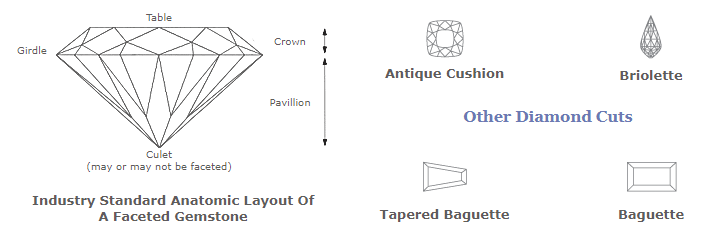
Carat Weight
Diamond weight is measured in Carats. This unit of measurement originates from the traditional use of carob seeds to weigh Gemstones. Carob seed were used because of their consistent size and shape. One Carat is the equivalent of 0.20 Grams. Further divided into 100 smaller units known as Points, the term carats is often confused with “Karats”. “Karat” is a measurement of gold purity and has no relationship to the term Carats.
As mentioned above, unlike Gemstones, Diamonds are cut to a uniform ideal for maximum Brilliance, Sparkle and Fire. With this uniform cutting and proportions, we can very conveniently and accurately equate Diamond Carat Size with their millimeter weight.
Clarity
Inclusions are tiny natural features within the body of a Diamond. Nearly all Gemstones contain some inclusions, however many are microscopic and can only be glimpsed under magnification. If inclusions do not interfere with the Brilliance, Sparkle and Fire seen by the passage of light through the Gem, they do not affect the beauty or value.
Clarity in Gemstones is determined by judging both the amount and location of inclusions. Organizations like the GIA (Gemological Institute If America) have set uniform standards to be used when grading clarity in Diamonds.
Clarity affects both the beauty and value of the Diamond. The higher the clarity grade assigned from the list below, the higher the value.
Flawless Internally and Externally Flawless
IF Internally Flawless
VVS1 / VVS2 Very Very Slightly Included
Inclusions not visible to the naked eye and difficult to detect with a 10x loupe.VS1 / VS2
Very Slightly Included
Inclusions not visible to the naked eye whilst comparatively easy to see with a 10x loupe.SI1 / SI2 Slightly Included
Quite easy to see with the close naked eye, large and/or numerous with a 10x loupe.I1 Included
Moderate effect on appearance or durability.I2 Included
Severe effect on appearance or durability.I3 Included
Severe effect on both appearance and durability.PK Pique
Inclusions visible to the naked eyes.
Is It Real? Diamond Identification Basics
There are several ways you can distinguish Diamonds from its imitations using regular Gem Tools and everyday items. While distinguishing Diamonds from its imitators may seem hard at first, it is often surprisingly easy.
The most commonly utilized Diamond simulant is Cubic Zirconia. No relation to natural Zircon, CZ as it is known, makes a fairly convincing Diamond simulant. Although discovered in the 1930’s, CZ first entered the market in the 1970’s. This gem simulant quickly generated concern within the Jewelry and Diamond industries. Unwarranted pessimism said CZ would ruin the industry, as it was just too difficult for jewelers to tell the difference.
However, the optical properties of Diamond and Cubic Zirconia are different. One of the reasons for the beauty of Diamonds is their remarkable power of reflection. A well-proportioned Round Brilliant Cut Diamond returns all the light that enters it back through the table facet. In other words, no light at all “leaks” out of the back of the Diamond.
Conversely, a Round Brilliant Cut Cubic Zirconia, with its lesser powers of reflection, experiences loss of light or “leakage” through the back. This loss results in diminished brilliance and beauty. Initially this loss of brilliance and light sounds negative, but it is actually a powerful ally for a person who has no expensive space age equipment.
These differences can be exploited through a simple test that distinguishes between Diamond and Cubic Zirconia using nothing more complicated than a pen and a piece of paper. Take a normal household black pen with a thin nib, draw a 5cm long straight line on a white piece of paper and place it down on a table. Take a Round Cut Cubic Zirconia and a Round Cut Diamond, and place them side-by-side, table facets down, directly over the pen line. Look down from above through the back of the two gems. What can you see? Is there a difference?
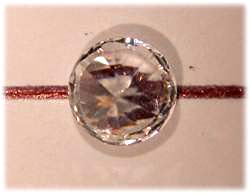

Please be aware that the above test’s diagnostic accuracy is largely experiential. Practice with some known CZ’s and Diamonds – look and study the resulting images through the back of the gems and remember the witnessed results. While Diamonds that are not ideally cut may allow some of the pen image to leak through the back, the strength and width of the image seen will be markedly different to those seen in CZ.
In the late 1990’s Moissanite burst onto the jewelry scene. Again in a flurry of concern, the industry had to adapt very quickly to this new and convincing jewel. Worryingly, conventional thermal-based Diamond Testers could not distinguish Moissanite from Diamond. In a now notorious case of investigative journalism, British newshounds took Moissanite to 10 London jewelers for an “appraisal”, while secretly filming the outcome. Out of the 10 jewelers put to the test, only 1 correctly identified the Moissanite. Interestingly, many of the jewelers went on to file complaints to the Broadcasting Standards Commission, citing entrapment and negative portrayal in front of the nation; their complaints were upheld.
In actuality, this embarrassing episode was unnecessary, as any person with a 10x gem loupe and little bit of training can easily distinguish between the two. In the early days of Moissanite’s circulation, its very strong double refraction was not well publicized. With only a simple 10x loupe, this optical doubling feature can be spotted a mile off. Diamond, a singly refractive gem, will never ever show this effect.
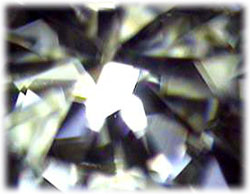
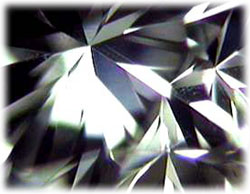
In wrapping up, please remember three key points regarding Diamond identification:
1. Diamonds are not always difficult to distinguish from their simulants.
2. When a new simulant enters the market, the rapid dissemination of diagnostic information is key.
3. Space age equipment is not always necessary; often solutions and distinguishing features are much more simple than initially anticipated.
Also, no matter what you’ve learnt or think you know, the only sure fire way to identify, qualify and assess a Diamond is to use the professional services of a Diamond grading laboratory.
Need more information? Email our friendly Customer Support Department at info@mandicollection.com.

Free Shipping
Free shipping to the US or CAN for orders of $500 or more.

Best Quality
We are renowned for selling the best gems and jewelry.

Best Offers
Unlock exclusive offers and be the first to know of new arrivals

Secure Payments
Exclusive financing options. All transactions are SSL protected.
